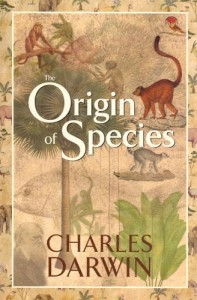(8) Mutual affinities (pages 93-95)
(9) “There is grandeur in this view of life” (pages 95-99)
Origin’s Chapter 14 probes the ‘mutual affinities of organic beings’ by focusing on various branches of biology (as practiced in Darwin’s day). Origin’s overarching argument is that the problems these disciplines were encountering could be addressed by his theory of descent with modification.
• Classification slotted creatures into spots on a chart – depending on their external characteristics – and ranking them from kingdoms to species. But in Darwin’s theory, it is not external characteristics which most profoundly identify a species but its relationships of descent. All true classification is genealogical.
• Comparative anatomy studied structural resemblances between species to understand similarities and differences (for example, the bones of a human hand, of a bat’s wing, in the paddle of a porpoise). Rather than attributing these patterns to a plan of creation with unchanging archetypes, the theory of common descent holds that such characteristics can be explained by inheritance from a common parent.
• Comparative embryology studied the forms of species prior to birth. Darwin hewed to the then-common view that each individual embryo recapitulated all the stages of the history of its species as it developed (a view that is now discredited). The gist of his argument, however, holds firm – that descent with modification can explain similarities across species before birth.
• Rudimentary or atrophied organs, of no use to their owners yet common throughout nature, also found a sensible interpretation in his theory. They can be compared with the letters of a word which are still retained in the spelling even though useless in the pronunciation (think of the word ‘through’). While no longer useful, at least they serve as clues in tracing the word’s derivation.
Major issues in these various biological disciplines fall into place when we conclude that descent with modification has left an imprint on all aspects of living organisms.
(9) “There is grandeur in this view of life” (pages 95-99)
Origin’s last chapter opens with an overarching defense. Given the range of evidence natural selection can interpret, it as central to the study of life as the law of gravity is to astronomy and physics. Why, Darwin asks rhetorically, have all the most eminent living naturalists and geologists rejected this view of the mutability of species? One reason is that people are slow to admit any great change when they can’t see the intermediate steps. Another reason is the inability to grasp periods of time as long as one hundred million years. Yet another reason is political and psychological; senior naturalists had invested too much in their own position to be open to new ideas.
Darwin ends his defense with a hopeful look to the future. Once we see that organisms have a history, when we understand that all living beings are related, then the light will dawn:
“There is grandeur in this view of life, with its several powers, having been originally breathed into a few forms or into one; and that, whilst this planet has gone cycling on according to the fixed law of gravity, from so simple a beginning endless forms most beautiful and most wonderful have been, and are being, evolved.”
To add your comments or questions,
click on ‘Leave a Reply’ or ‘Replies’ (below).
After giving your name and email address,
your comments will be posted.

